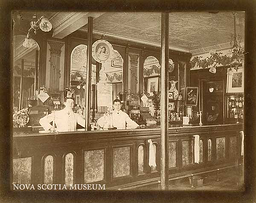Inventory count
 An inventory count can be best described as a physical inventory of what is currently in stock in the storage areas, comparing that count to what the liquor, beer and wine inventory count software thinks is in stock, and making any necessary adjustments to get the liquor, beer and wine inventory count software to match the storage area counts.
An inventory count can be best described as a physical inventory of what is currently in stock in the storage areas, comparing that count to what the liquor, beer and wine inventory count software thinks is in stock, and making any necessary adjustments to get the liquor, beer and wine inventory count software to match the storage area counts.
Taking an inventory count on a regular basis will not only help us have a tighter control over our liquor, beer and wine inventory but also flag us of any discrepancies. Some inventory count software will also make you aware of any product that may have gone missing like a bottle of wine or liquor. Inventory counts will also help you better asses if you are potentially carry to much inventory that can expose you to shrinkage and tie up valuable cash flow.
Inventory counts can also be indicators of low stock levels that could lead to customer dissatisfaction and lost sales. It is important that inventory counts are performed on a regular basis. Precise inventory counts can you give you the valuable information you may need to make some decisions in your business that you may otherwise not have taken.
A perfect example can be volume rebate purchases; if you are inventory count show you are carrying too much of a certain product already, it may be prudent not pursuing a special deal, on the other end of the spectrum, an update inventory count may actually encourage a large volume purchase due to the product popularity and the need to replenish low stock level.


 If you are on the market for a bar inventory system or considering a bar inventory system to begin a better control of your liquid assets, it is best you begin to understand why you are in need of a bar inventory system. There are many bar systems out there and a simple search on the internet will bring up many.
If you are on the market for a bar inventory system or considering a bar inventory system to begin a better control of your liquid assets, it is best you begin to understand why you are in need of a bar inventory system. There are many bar systems out there and a simple search on the internet will bring up many. 

 The primary goal of any establishment that sells
The primary goal of any establishment that sells 

